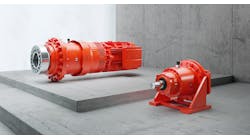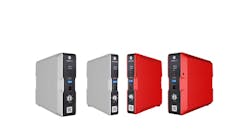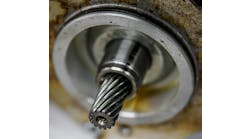The future of automation may be a bit cloudy, but the forecast calls for all kinds of innovation. "It is a little tricky to predict the future of automation because there are three components that comprise automation in varying levels—electrical innovation, mechanical innovation and the computer science that ties the two together," says Tom Jensen, senior vice president and general manager, AMK Automation.
"That said, there are some concepts that will make automation more powerful going forward. First, in the mechanical area, new materials will make machines lighter and cross the divide to the electrical arena. Nanotube technology has already been used to create lighter, stiffer materials, but, because of their electrical properties, things like higher-capacity conductors, conductive cloth and new types of sensors will be possible.
Instead of having a sensor at the end of a conveyor belt, what if the belt itself could sense a product on it?"
Just as important, the same science is reducing the electrical pathways on a central processing unit (CPU) to the width of a few atoms, making processors even more powerful. "This in turns makes software and firmware more powerful," says Jensen. "So, instead of engineers programming in a PLC’s language, the PLCs are now capable of understanding common languages, such as C, structured text and XML, making them accessible to more programmers and easier to program, as well as adding functionality in the consumer marketplace."
One technology AMK is pursuing is shared computing. "This is the idea that, when you have multiple processors, you can take the spare bandwidth of each processor and apply it to a local task," explains Jensen. "This allows the technology provider to pack more power and functionality into a control system without adding hardware, thereby increasing performance without adding cost, and it may even reduce cost."
A typical automation system includes drives, HMI and PLC, and they all have multiple processors—CPU and communications—for them to function in a network. The way an AMK system is formatted provides spare CPU capacity. This allows creation of specific apps—configured, not programmed—that run in the local network creating a specific functionality without having to add a PLC. The apps will be available for everything from kinematics through communication with some examples including PackML, MES, Cell and SCADA.
"This is a game-changer for the automation industry," says Jensen. "Up until now, technology providers have offered a processor and an editor to OEMs. This meant that machine development took place from the ground up each time an OEM had a new machine concept. The focus, or limit, to how far an OEM could push a new design was based on the power of the automation system. With this pivot, the OEM designs and builds his specific kinematic—mechanic—and applies the distributed system and apps to it. This means that adapting new systems does not require a new programming system."
The product features were developed and displayed at SPS IPC Drives 2017 and Hannover Fair 2018 in the form of a three-axis Delta robot. The robot was configured to recreate a world-champion chess game, demonstrating that a configurable kinematic can then be used to take in and follow a scripted motion path. This means that you can build an array of configured robots and use a supervisory system to control their operation.
In line with that demonstration, AMK’s R&D group is testing robotic arrays. "This will allow multiple robots based on the shared computing concept to share tasks—for example, tracking a common conveyor belt and filling a case, one robot per layer, as a progressive build, thereby making production takt times more predictable, quicker and more flexible," says Jensen. "More apps are due in the coming months."
These apps are backed up, as well. AMK is using cloud technology as the app and configuration server for its systems. This means that OEMs can store exact backups of projects they created and use the backups to quickly load new machines as they are built. This ensures that the latest updates are included in the latest build.
"It is also an awesome service tool," says Jensen. "If an end user ever has a problem and has to replace a controller, the OEM can give limited cloud access to the end user to download the backup to a new controller with a guarantee that the code is correct."
These types of solutions are putting problem-solving above sales, which all end users, machine builders and system integrators appreciate. While many vendors sell motors, drives and controls bundled with application expertise as solutions, apps can set them apart.
AMK seems to like design challenges. "Since 1963, those solutions have taken many shapes: power generators for solar and water; automotive powertrain, suspension and steering; and decentralized motion for mobile applications and industrial automation," says Jensen. "Solutions always configured from our shopping cart of standard components but combined with knowledge that results in innovative solutions to help customers differentiate themselves."






